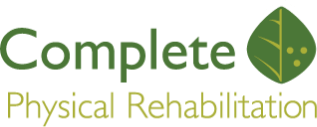As my training is progressing, I’m making awesome strides with overall distance, if I do say so myself. Last week I was able to complete a 7.24 mile long run! If you had asked me a few months ago if I wanted to go 7 miles, I’d say yes, but only if I could drive there in a car!

In addition, I was able to get in 1 other day of strength training in my Physical Therapy clinic in Jersey City after treating patients, where I worked on lower extremity strength via weights and plyometric bounding exercises . And I made sure to get in at least 15 minutes of stretching every single day. As my runs have become longer, I’ve noticed that I have to stretch more and more in order to keep my strength and endurance up and soreness down.
In terms of issues during the run itself, I have become a serious fan of moisture wicking headbands. Personally, I have oily skin. So, when I sweat, it runs right off of my head, quickly down the oily skin on my forehead, and straight into my eyes, throwing me for a loop and affecting my overall performance.
Physically, I’ve felt pretty good during my long runs. Breathing has been great, as has overall hydration. I’ve found that I need to take a sip of water approximately every 5 minutes in order to maintain a steady workload. With hydration, it’s important to hydrate, but do NOT wait until you start to feel parched. By then, it’ll be too late and your path to cramps may have already started. Steady drinking during the run is definitely the way to go to keep effectively hydrated.
With form, there were two particular areas of interest that I focused on last week. The first is feeling where the contact point is on my heel, ending up on the big toe and following through the toes to elevate the knee. For myself, I kept my knee elevation at under 35 degrees of motion to reduce the possibility for any ITB friction issues. The second is the spread of my feet. As I, or any runner, get fatigued, the feet tend to get closer and closer together. This can definitely contribute to ITB irritation, causing pain along the side of the kneecap, or pulling the kneecap to the point where it’s rubbing up against the point where the back of the kneecap meets the femur causing friction and leading to pain. Keeping a steady and consistent distance between your knees with your stride will definitely help to curtail any ITB pain overall.
This is where bounding exercises, in my opinion, are essential. Here’s a great video that I found with some helpful tips:
I haven’t felt a need to change my diet from previous weeks, as it has consistently kept my overall energy levels steady through this process. Water infused with sport drink mixes that provide extra micronutrients have been indispensable in my training, as has been rest, foods with health and low glycemic load cabs for sustainable energy, and my after-run recovery shake with vegan protein powder that I found at Whole Foods.
Overall, I’m more than pleased with how my training has progressed and I’m chomping at the bit to get at the United Airlines NYC Half Marathon, now only less than 3 weeks away!
Dr. James Pumarada is a licensed Physical Therapist (and now marathon runner!) specializing in Vestibular Physical Therapy and Running Physical Therapy with over 17+ years of experience. He is the co-owner of Complete Physical Rehabilitation, a Physical Therapy practice based in Elizabeth and Jersey City, NJ.
